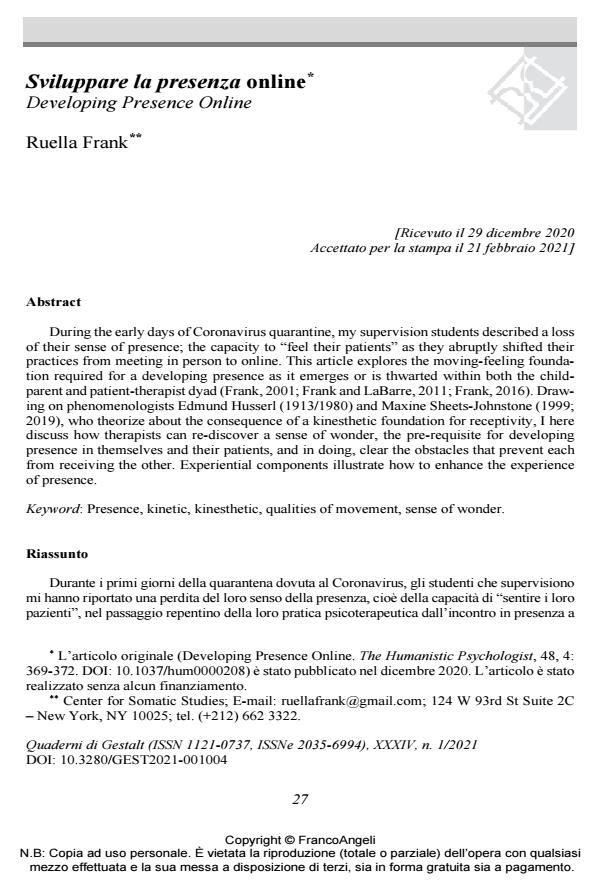Developing Presence Online
Journal title QUADERNI DI GESTALT
Author/s Ruella Frank
Publishing Year 2021 Issue 2021/1
Language Italian Pages 6 P. 27-32 File size 142 KB
DOI 10.3280/GEST2021-001004
DOI is like a bar code for intellectual property: to have more infomation
click here
Below, you can see the article first page
If you want to buy this article in PDF format, you can do it, following the instructions to buy download credits

FrancoAngeli is member of Publishers International Linking Association, Inc (PILA), a not-for-profit association which run the CrossRef service enabling links to and from online scholarly content.
During the early days of Coronavirus quarantine, my supervision students described a loss of their sense of presence; the capacity to "feel their patients" as they abruptly shifted their practices from meeting in person to online. This article explores the moving-feeling foundation required for a developing presence as it emerges or is thwarted within both the child-parent and patient-therapist dyad (Frank, 2001; Frank and LaBarre, 2011; Frank, 2016). Drawing on phenomenologists Edmund Husserl (1913/1980) and Maxine Sheets-Johnstone (1999; 2019), who theorize about the consequence of a kinesthetic foundation for receptivity, I here discuss how therapists can re-discover a sense of wonder, the pre-requisite for developing presence in themselves and their patients, and in doing, clear the obstacles that prevent each from receiving the other. Experiential components illustrate how to enhance the experience of presence.
Keywords: Presence, kinetic, kinesthetic, qualities of movement, sense of wonder.
Ruella Frank, Sviluppare la presenza online in "QUADERNI DI GESTALT" 1/2021, pp 27-32, DOI: 10.3280/GEST2021-001004